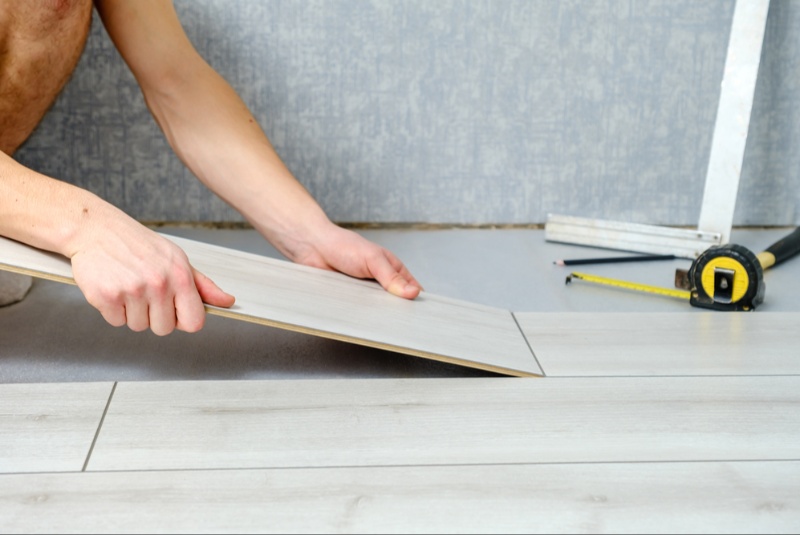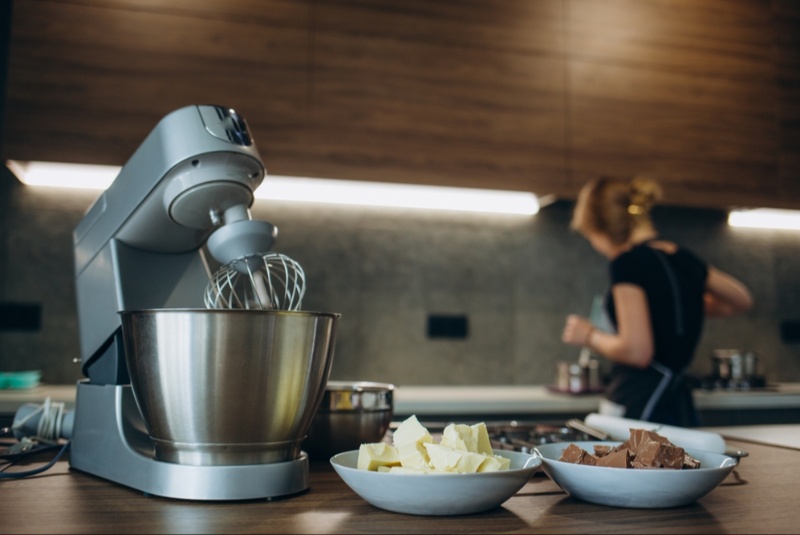Purchasing new flooring for your home is a meaningful investment that can significantly elevate both the aesthetic appeal and value of your space. Yet, new flooring can often carry a high price tag. Fortunately, with careful planning and strategic decisions, you can save considerably on this investment. Let's dive into effective ways to achieve beautiful, high-quality flooring without overspending.
1. Set a Realistic Budget
Creating a realistic budget is essential to controlling expenses in your flooring project. Assess your financial situation and establish a budget that balances ambition with practicality. A well-defined budget acts as a guide through the selection process, helping you prioritize options that align with your financial boundaries. Knowing your budget also allows you to navigate upselling tactics confidently, keeping you grounded in your financial plan.
2. Compare Prices and Materials
Once you’ve set your budget, it’s time to compare prices and materials from a variety of suppliers. Seek multiple quotations from different vendors and analyze each one carefully to identify the best value. Comparing prices not only broadens your perspective on what's available but also reveals quality differences among suppliers. In addition, consider the long-term maintenance and durability of each material—often, a slightly higher upfront cost can lead to substantial savings over the lifespan of the flooring.
3. Opt for Affordable, Durable Flooring Materials
Selecting materials that offer both affordability and durability is key to getting the most value from your purchase. Laminate and vinyl are excellent alternatives to pricier hardwood or stone, delivering a high-end look without the high-end price. Advances in manufacturing have made these materials more attractive and resilient, ideal for budget-conscious homeowners who want aesthetic appeal without the steep costs. Keep an open mind, and prioritize function and quality over initial visual appeal—today's budget-friendly flooring options have come a long way.
4. DIY Installation
If you enjoy DIY projects, consider taking on the flooring installation yourself. Many modern flooring options, such as click-lock vinyl and laminate, are designed with easy installation in mind. By handling the installation, you can eliminate labor costs, which can account for a substantial portion of a flooring project’s total cost. However, before committing to DIY installation, thoroughly research the process and tools required. While some flooring types are ideal for DIY enthusiasts, others, like hardwood, may require professional expertise to avoid costly mistakes.
5. Leverage Seasonal Sales and Discounts
Flooring materials often go on sale during holiday seasons, clearance events, and end-of-year sales. By planning your project around these sales, you can secure quality flooring at a reduced price. Additionally, many retailers offer significant discounts during seasonal promotions, so it's worthwhile to monitor sales events and make your purchase when discounts are at their peak. Signing up for notifications from flooring stores can also give you an advantage by alerting you to exclusive offers and early access to sales.
6. Purchase in Bulk
If you plan to replace flooring in multiple rooms or throughout your entire home, buying in bulk can lead to valuable savings. Many suppliers offer discounts for larger orders, allowing you to reduce the overall cost per square foot. When planning to purchase in bulk, ensure you’ve accurately measured the areas needing flooring to avoid ordering excess material, which can drive up costs unnecessarily.
7. Consider Reusing or Refurbishing Existing Flooring
In some cases, your current flooring may simply need a bit of attention rather than a complete replacement. Hardwood floors, for example, can often be refinished or resealed to restore their beauty. Similarly, tile floors can be cleaned and re-sealed to give them a refreshed appearance without the expense of replacing them. If refurbishing is an option, it can save you both time and money while providing an updated look.
8. Minimize Waste
Avoiding waste is a simple yet powerful way to save on flooring costs. Accurate measurements are essential to order only the amount of material you truly need. Generally, it’s advisable to order 10% more than your calculated requirement to account for cuts and waste, but resist the urge to order significantly more than necessary. Minimizing waste not only helps reduce expenses but also decreases the environmental impact of your project by limiting material overuse.
9. Consult with a Flooring Expert
While DIY research can yield valuable insights, consulting with a flooring expert can provide you with specific advice tailored to your needs. Experts can offer guidance on the most cost-effective materials for your lifestyle and the best installation techniques for your space. In some cases, a professional consultation can reveal money-saving opportunities, such as materials with lower long-term maintenance costs or installation techniques that reduce labor time. Even if you choose not to hire a professional for the entire project, an initial consultation can give you a strong foundation for making informed choices.

10. Consider Eco-Friendly, Low-Cost Options
Sustainable, eco-friendly flooring options like cork, bamboo, and recycled materials are not only good for the environment but can also be budget-friendly. Cork and bamboo, for example, are renewable resources that offer durability and a unique aesthetic at an affordable price. Recycled flooring, such as repurposed wood or tiles, can also provide a high-quality look without the high cost. Eco-friendly options may have added benefits like improved air quality, making them worth exploring if you’re interested in sustainability.
11. Factor in Maintenance Costs
It’s essential to consider long-term maintenance when selecting your flooring material. Some materials, like vinyl, require minimal upkeep, while others, like natural stone, may need regular sealing or specialized cleaning products. Be sure to include these future costs in your decision-making process, as they can impact the overall cost-effectiveness of your choice. A material that appears cheaper initially may end up being more expensive if it requires frequent maintenance or replacement.
12. Consider Flooring Remnants and Overstock Options
Remnant or overstock pieces from larger projects can be an affordable way to purchase high-quality materials. Many flooring retailers offer remnants at a discounted price, allowing you to purchase premium materials without the premium price. This option is particularly useful if you’re working on a small area, like a single room, or if you’re open to mixing materials to create a unique design.
13. Look for Cash Payment Discounts
Some flooring retailers and contractors offer discounts for cash payments, helping you avoid credit card processing fees or financing charges. If you’re able to pay in cash, don’t hesitate to ask about potential discounts—it’s a straightforward way to reduce your costs without any compromises.
14. Take Advantage of Warranties
Quality flooring often comes with a warranty that can save you money in the event of damage or defects. When comparing flooring options, consider the warranty terms offered, as a longer warranty can be a sign of durability and quality. A solid warranty ensures that you’re protected from additional expenses if the flooring doesn’t hold up as expected, giving you peace of mind as you make your purchase.
Conclusion
Investing in new flooring for your home doesn't have to drain your budget. By setting a well-thought-out budget, exploring affordable materials, and strategically timing your purchases, you can achieve a stunning transformation in your home without breaking the bank. Whether you’re taking advantage of seasonal sales, considering DIY options, or consulting with a flooring expert, there are numerous ways to cut costs while still achieving beautiful, quality results. Remember, with careful planning and mindful purchasing, you can enjoy the benefits of new, attractive flooring that enhances your space and saves you money in the long run.




